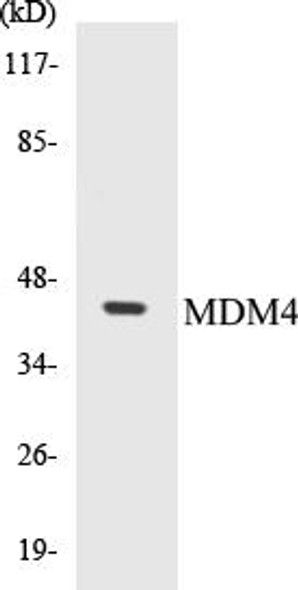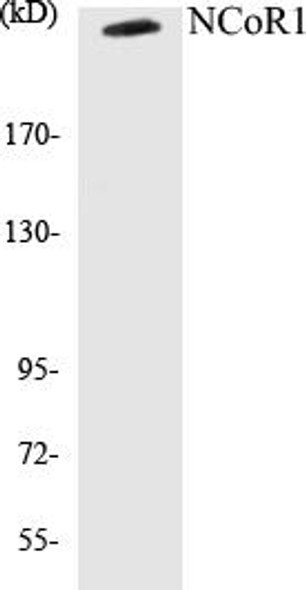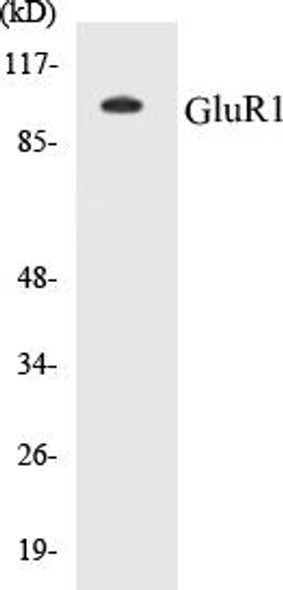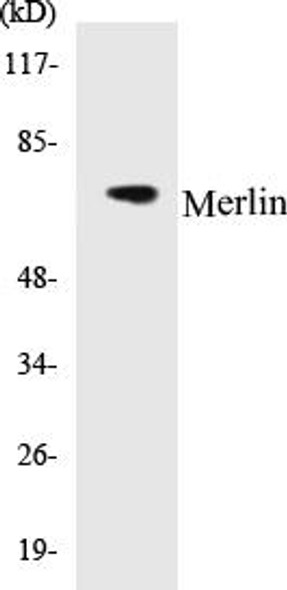SNAP25 Colorimetric Cell-Based ELISA Kit
- SKU:
- CBCAB00032
- Product Type:
- ELISA Kit
- ELISA Type:
- Cell Based
- Reactivity:
- Human
- Mouse
- Rat
- Detection Method:
- Colorimetric
Description
SNAP25 Colorimetric Cell-Based ELISA Kit
The SNAP25 Colorimetric Cell-Based ELISA Kit from Assay Genie is designed for the precise detection of SNAP25 levels in cell samples. This kit offers high sensitivity and specificity, guaranteeing accurate and consistent results, making it perfect for various research applications.SNAP25 is a critical protein involved in neurotransmitter release, playing a crucial role in synaptic transmission and plasticity. Dysregulation of SNAP25 has been implicated in several neurological disorders, including schizophrenia, autism, and Alzheimer's disease.
Studying SNAP25 levels can provide valuable insights into the mechanisms underlying these conditions and aid in the development of potential therapeutic interventions.Overall, the SNAP25 Colorimetric Cell-Based ELISA Kit provides researchers with a reliable tool to examine SNAP25 levels in cell samples, advancing our understanding of neurobiology and neurological disorders.
| Product Name: | SNAP25 Colorimetric Cell-Based ELISA |
| Product Code: | CBCAB00032 |
| ELISA Type: | Cell-Based |
| Target: | SNAP25 |
| Reactivity: | Human, Mouse, Rat |
| Dynamic Range: | > 5000 Cells |
| Detection Method: | Colorimetric 450 nmStorage/Stability:4°C/6 Months |
| Format: | 96-Well Microplate |
The SNAP25 Colorimetric Cell-Based ELISA Kit is a convenient, lysate-free, high throughput and sensitive assay kit that can detect SNAP25 protein expression profile in cells. The kit can be used for measuring the relative amounts of SNAP25 in cultured cells as well as screening for the effects that various treatments, inhibitors (ie siRNA or chemicals), or activators have on SNAP25.
Qualitative determination of SNAP25 concentration is achieved by an indirect ELISA format. In essence, SNAP25 is captured by SNAP25-specific primary antibodies while the HRP-conjugated secondary antibodies bind the Fc region of the primary antibody. Through this binding, the HRP enzyme conjugated to the secondary antibody can catalyze a colorimetric reaction upon substrate addition. Due to the qualitative nature of the Cell-Based ELISA, multiple normalization methods are needed:
| 1. | A monoclonal antibody specific for human GAPDH is included to serve as an internal positive control in normalizing the target absorbance values. |
| 2. | Following the colorimetric measurement of HRP activity via substrate addition, the Crystal Violet whole-cell staining method may be used to determine cell density. After staining, the results can be analysed by normalizing the absorbance values to cell amounts, by which the plating difference can be adjusted. |
| Database Information: | Gene ID: 6616, UniProt ID: P60880, OMIM: 600322, Unigene: Hs.167317 |
| Gene Symbol: | SNAP25 |
| Sub Type: | None |
| UniProt Protein Function: | Function: t-SNARE involved in the molecular regulation of neurotransmitter release. May play an important role in the synaptic function of specific neuronal systems. Associates with proteins involved in vesicle docking and membrane fusion. Regulates plasma membrane recycling through its interaction with CENPF. |
| UniProt Protein Details: | Subunit structure: Part of the SNARE core complex containing SNAP25, VAMP2 and STX1A. This complex binds CPLX1. Interacts with CENPF, TRIM9, RIMS1, SNAPIN, OTOF and HGS. Binds STXBP6. Found in a ternary complex with STX1A and VAMP8. Found in a complex containing SYT1, SV2B and syntaxin-1 Subcellular location: Cytoplasm › perinuclear region By similarity. Cell membrane; Lipid-anchor. Cell junction › synapse › synaptosome. Note: Membrane association requires palmitoylation. Expressed throughout cytoplasm, concentrating at the perinuclear region Tissue specificity: Neurons of the neocortex, hippocampus, piriform cortex, anterior thalamic nuclei, pontine nuclei, and granule cells of the cerebellum. Post-translational modification: Palmitoylated. Cys-85 appears to be the main site, and palmitoylation is required for membrane association Miscellaneous: When cloned and expressed in Eschericia coli, where protein palmitoylation does not occur, Cys-85, Cys-88, Cys-90 and Cys-92 in the protein sequence readily form an iron-sulfur cluster instead. Sequence similarities: Belongs to the SNAP-25 family.Contains 2 t-SNARE coiled-coil homology domains. |
| NCBI Summary: | Synaptic vesicle membrane docking and fusion is mediated by SNAREs (soluble N-ethylmaleimide-sensitive factor attachment protein receptors) located on the vesicle membrane (v-SNAREs) and the target membrane (t-SNAREs). The assembled v-SNARE/t-SNARE complex consists of a bundle of four helices, one of which is supplied by v-SNARE and the other three by t-SNARE. For t-SNAREs on the plasma membrane, the protein syntaxin supplies one helix and the protein encoded by this gene contributes the other two. Therefore, this gene product is a presynaptic plasma membrane protein involved in the regulation of neurotransmitter release. Two alternative transcript variants encoding different protein isoforms have been described for this gene. [provided by RefSeq] |
| UniProt Code: | P60880 |
| NCBI GenInfo Identifier: | 46397726 |
| NCBI Gene ID: | 6616 |
| NCBI Accession: | P60880.1 |
| UniProt Secondary Accession: | P60880,P13795, P36974, P70557, P70558, Q53EM2, Q5U0B5 Q8IXK3, Q96FM2, B2RAU4, D3DW16, D3DW17, |
| UniProt Related Accession: | P60880 |
| Molecular Weight: | |
| NCBI Full Name: | Synaptosomal-associated protein 25 |
| NCBI Synonym Full Names: | synaptosomal-associated protein, 25kDa |
| NCBI Official Symbol: | SNAP25 |
| NCBI Official Synonym Symbols: | RIC4; SEC9; SNAP; RIC-4; SNAP-25; FLJ23079; bA416N4.2; dJ1068F16.2 |
| NCBI Protein Information: | synaptosomal-associated protein 25; SUP; super protein; OTTHUMP00000030267; OTTHUMP00000030268; synaptosomal-associated 25 kDa protein; resistance to inhibitors of cholinesterase 4 homolog |
| UniProt Protein Name: | Synaptosomal-associated protein 25 |
| UniProt Synonym Protein Names: | Super protein; SUP; Synaptosomal-associated 25 kDa protein |
| Protein Family: | Synaptosomal-associated protein |
| UniProt Gene Name: | SNAP25 |
| UniProt Entry Name: | SNP25_HUMAN |
| Component | Quantity |
| 96-Well Cell Culture Clear-Bottom Microplate | 2 plates |
| 10X TBS | 24 mL |
| Quenching Buffer | 24 mL |
| Blocking Buffer | 50 mL |
| 15X Wash Buffer | 50 mL |
| Primary Antibody Diluent | 12 mL |
| 100x Anti-Phospho Target Antibody | 60 µL |
| 100x Anti-Target Antibody | 60 µL |
| Anti-GAPDH Antibody | 60 µL |
| HRP-Conjugated Anti-Rabbit IgG Antibody | 12 mL |
| HRP-Conjugated Anti-Mouse IgG Antibody | 12 mL |
| SDS Solution | 12 mL |
| Stop Solution | 24 mL |
| Ready-to-Use Substrate | 12 mL |
| Crystal Violet Solution | 12 mL |
| Adhesive Plate Seals | 2 seals |
The following materials and/or equipment are NOT provided in this kit but are necessary to successfully conduct the experiment:
- Microplate reader able to measure absorbance at 450 nm and/or 595 nm for Crystal Violet Cell Staining (Optional)
- Micropipettes with capability of measuring volumes ranging from 1 µL to 1 ml
- 37% formaldehyde (Sigma Cat# F-8775) or formaldehyde from other sources
- Squirt bottle, manifold dispenser, multichannel pipette reservoir or automated microplate washer
- Graph paper or computer software capable of generating or displaying logarithmic functions
- Absorbent papers or vacuum aspirator
- Test tubes or microfuge tubes capable of storing ≥1 ml
- Poly-L-Lysine (Sigma Cat# P4832 for suspension cells)
- Orbital shaker (optional)
- Deionized or sterile water
*Note: Protocols are specific to each batch/lot. For the correct instructions please follow the protocol included in your kit.
| Step | Procedure |
| 1. | Seed 200 µL of 20,000 adherent cells in culture medium in each well of a 96-well plate. The plates included in the kit are sterile and treated for cell culture. For suspension cells and loosely attached cells, coat the plates with 100 µL of 10 µg/ml Poly-L-Lysine (not included) to each well of a 96-well plate for 30 minutes at 37°C prior to adding cells. |
| 2. | Incubate the cells for overnight at 37°C, 5% CO2. |
| 3. | Treat the cells as desired. |
| 4. | Remove the cell culture medium and rinse with 200 µL of 1x TBS, twice. |
| 5. | Fix the cells by incubating with 100 µL of Fixing Solution for 20 minutes at room temperature. The 4% formaldehyde is used for adherent cells and 8% formaldehyde is used for suspension cells and loosely attached cells. |
| 6. | Remove the Fixing Solution and wash the plate 3 times with 200 µL 1x Wash Buffer for five minutes each time with gentle shaking on the orbital shaker. The plate can be stored at 4°C for a week. |
| 7. | Add 100 µL of Quenching Buffer and incubate for 20 minutes at room temperature. |
| 8. | Wash the plate 3 times with 1x Wash Buffer for 5 minutes each time. |
| 9. | Add 200 µL of Blocking Buffer and incubate for 1 hour at room temperature. |
| 10. | Wash 3 times with 200 µL of 1x Wash Buffer for 5 minutes each time. |
| 11. | Add 50 µL of 1x primary antibodies (Anti-SNAP25 Antibody and/or Anti-GAPDH Antibody) to the corresponding wells, cover with Parafilm and incubate for 16 hours (overnight) at 4°C. If the target expression is known to be high, incubate for 2 hours at room temperature. |
| 12. | Wash 3 times with 200 µL of 1x Wash Buffer for 5 minutes each time. |
| 13. | Add 50 µL of 1x secondary antibodies (HRP-Conjugated AntiRabbit IgG Antibody or HRP-Conjugated Anti-Mouse IgG Antibody) to corresponding wells and incubate for 1.5 hours at room temperature. |
| 14. | Wash 3 times with 200 µL of 1x Wash Buffer for 5 minutes each time. |
| 15. | Add 50 µL of Ready-to-Use Substrate to each well and incubate for 30 minutes at room temperature in the dark. |
| 16. | Add 50 µL of Stop Solution to each well and read OD at 450 nm immediately using the microplate reader. |
(Additional Crystal Violet staining may be performed if desired – details of this may be found in the kit technical manual.)










